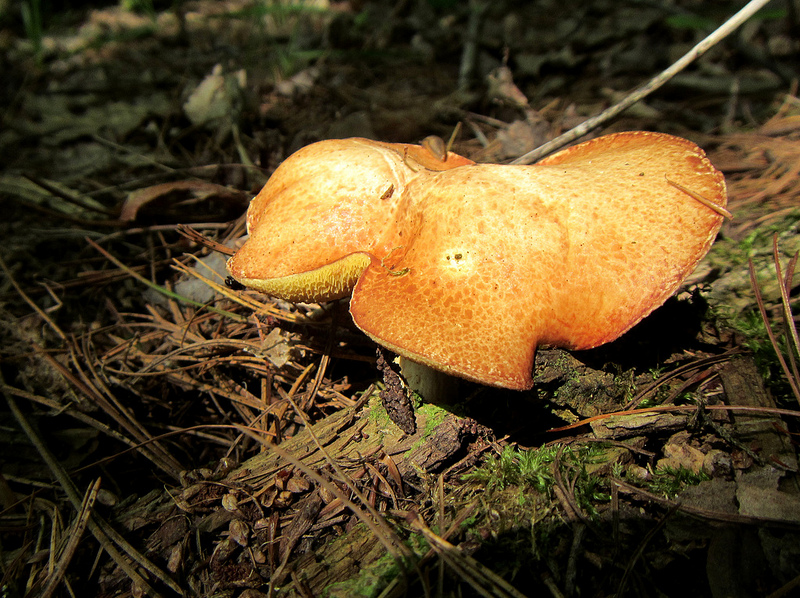Map Snapshot


1 Record
Seasonality Snapshot
Eating mushrooms can be dangerous. One should do so only with expert advice and great care. MBP accepts no liability for injury sustained in consuming fungi or other biodiversity. Use of media featured on Maryland Biodiversity Project is only permitted with express permission of the photographer.
Suillus cavipes in New Germany SP, Garrett Co., Maryland (6/24/2013). Mycorrhizial (tied to the roots of a vascular plant) and associated with larches. Matt Tillett notes, "the Civilian Conservation Corps planted hundreds of European larch (Larix decidua) in New Germany during the 1930s." Verified by Lance Biechele.
Media by
Matt Tillett.
Source: Wikipedia
| Suillus cavipes | |
|---|---|

| |
| Scientific classification | |
| Domain: | Eukaryota |
| Kingdom: | Fungi |
| Division: | Basidiomycota |
| Class: | Agaricomycetes |
| Order: | Boletales |
| Family: | Suillaceae |
| Genus: | Suillus |
| Species: | S. cavipes
|
| Binomial name | |
| Suillus cavipes | |
| Synonyms[1] | |
|
Boletus cavipes Opat. (1836) | |
| Suillus cavipes | |
|---|---|
| Pores on hymenium | |
| Cap is convex | |
| Hymenium is adnate | |
| Stipe is bare | |
| Ecology is mycorrhizal | |
| Edibility is edible | |
Suillus cavipes, commonly known as the hollow foot[2] is an edible species of mushroom in the genus Suillus.[3] It is found in Europe and North America. It is associated with larch in the Pacific Northwest.[4]
The brownish cap is dry, scaly, sometimes with veil remnants on the edge. The pores are buff. The stipe is yellowish above, sometimes with a slight ring, and cap-colored below; it is hollow, hence the epithet cavipes (Latin: 'hollow foot').[4]
See also
[edit]References
[edit]- ^ "Suillus cavipes (Opat.) A.H. Sm. & Thiers 1964". MycoBank. International Mycological Association. Retrieved 2011-01-05.
- ^ Arora, David (1986). Mushrooms Demystified. Berkeley: Ten Speed Press. ISBN 9780898151695.
- ^ Phillips, Roger (2010). Mushrooms and Other Fungi of North America. Buffalo, NY: Firefly Books. p. 287. ISBN 978-1-55407-651-2.
- ^ a b Trudell, Steve; Ammirati, Joe (2009). Mushrooms of the Pacific Northwest. Timber Press Field Guides. Portland, OR: Timber Press. p. 222. ISBN 978-0-88192-935-5.
External links
[edit] Media related to Suillus cavipes at Wikimedia Commons
Media related to Suillus cavipes at Wikimedia Commons- Suillus cavipes in Index Fungorum
